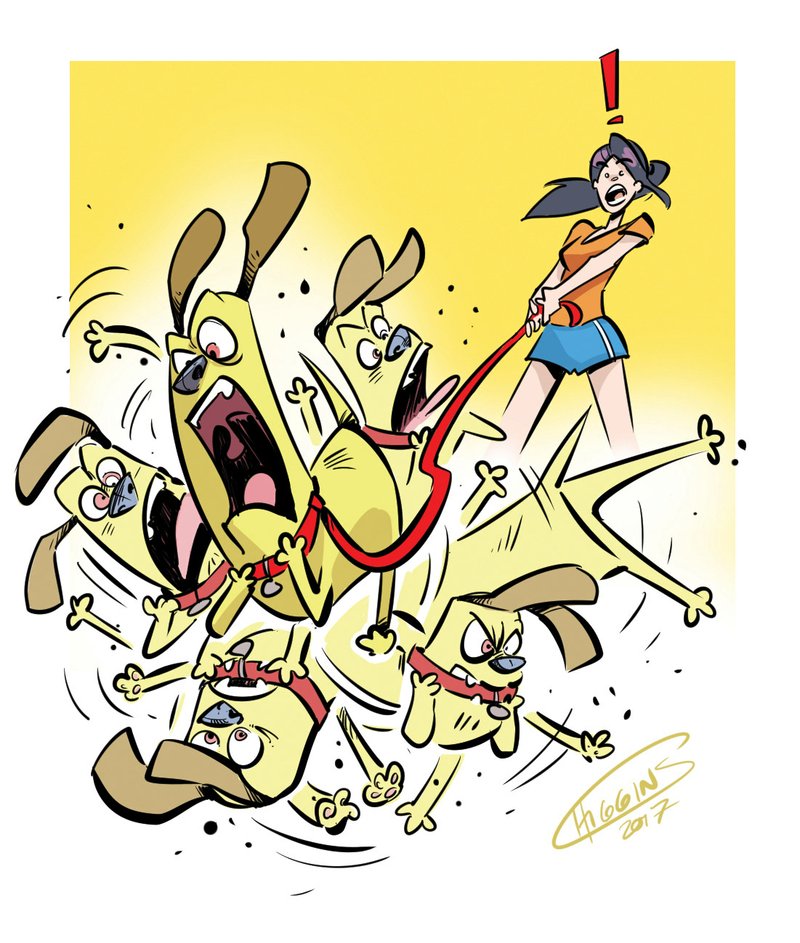We need some advice. We have taken in a little Heinz 57 that's about 3 years old. She strayed from home about a month ago and it took almost a week before we could catch her. We could not ask for a better dog except for one thing -- she will not wear a collar or harness. We have tried putting a collar on her without a leash and she only lies down and will not move. Hook a leash to it and she bucks and rolls like the devil has a hold of her. Any suggestions would be greatly appreciated.
Like many rescued dogs, yours sounds a bit anxious and skittish, which means that she'll need a little extra tender loving care and time to adjust to things such as collars and leashes. But she can definitely learn.
Professional dog trainer Karen Kelley of North Little Rock says teaching your dog to accept first a collar, then a leash is a process of conditioning that might take weeks, so it's important to begin with an open mind and a flexible timeline.
"You can have a goal, like you'd want her to be good on a leash at the end of the month," Kelley says. "But don't have a set time limit where you're going to get frustrated, because that just creates more tension for the dog."
While teaching your dog a new behavior, you'll also be helping build her confidence, so it's critical that the experience be positive, she says. Start small and reward each step forward with a reward that's highly prized, whether it's treats, affirmative attention or play time.
For training, buy a cheap, lightweight collar with a buckle clasp, Kelley says. Fasten the collar so that it's loose enough to slip easily over your dog's head and rest lightly on the neck. When the collar is around the dog's neck, praise her and give her treats. If she scratches at the collar or otherwise appears anxious about it, calmly redirect her attention to a toy or a treat. Do this several times a day for a few minutes at a time.
As your dog becomes more comfortable with the collar, fasten it more snugly. Run your fingers beneath it when it's on her neck while saying "Good dog" and praising her.
Kelley says it may be easier to condition your dog when she's tired instead of full of energy. You can play with her before a training session to work off some energy, then slip the collar on her.
When your dog accepts the collar easily, you can then acclimate her to the leash. For this step, you'll need several inexpensive, lightweight nylon leashes with metal clips. Take one of the leashes and trim it until there's only about an inch of leash attached to the clip. Attach the leash to your dog's collar, making sure to give a reward and praise her. Then let her wear the collar with the trimmed leash for a few minutes at a time until she's not bothered by it.
Next, shorten a second leash to where it hangs down to her feet and attach it to her collar. Follow the same steps as before. "Make everything positive," Kelley says. "You want to make sure no one is pulling on the leash or forcing her to wear it. It'll become a positive thing if she's getting rewarded."
If your dog is food-motivated, give her a treat that's extra special, something she doesn't get all the time such as a bite of boiled chicken. Use that treat only for collar and leash training. Keep in mind that some dogs are motivated more by toys, attention or getting to play fetch, so use whatever reward works for your dog.
The final step is attaching a full-length leash (4- to 6-feet long) to the collar and letting your dog drag it around the house so that she gets used to the weight of it.
Kelley suggests enrolling your dog in a basic obedience course during or after your leash-training project. Attending a class -- or any type of training -- ideally will be a bonding and confidence-building experience for you and your dog.
Family on 06/07/2017
